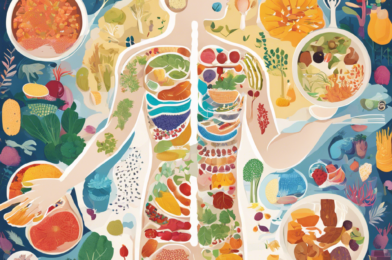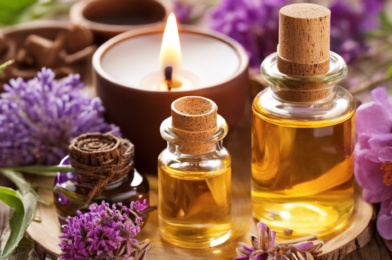The world of energy healing offers a fascinating glimpse into ancient practices that have endured the test of time, providing natural and holistic approaches to achieving balance and wellness. These modalities focus on the subtle energies that flow through and around us, aiming to restore harmony and promote self-healing. With a growing interest in complementary therapies, many are turning to these ancient techniques to enhance their physical, mental, and spiritual well-being.
One of the most well-known energy healing practices is Reiki, a Japanese technique for stress reduction and relaxation that also promotes healing. The word Reiki is derived from the Japanese words “rei” (spiritual wisdom) and “ki” (life force energy). Reiki practitioners act as conduits for universal life force energy, channeling it through their hands to the recipient, promoting balance and facilitating the body’s natural healing process.
Another ancient practice is Qigong, a Chinese system that works with the body’s qi or chi (life energy). Qigong practitioners use breathing techniques, gentle movements, and meditation to cultivate and balance chi, enhancing its flow through the body’s meridians. This practice is believed to benefit physical health, boost the immune system, and improve mental clarity and emotional well-being.
Furthermore, crystal healing is a modality that utilizes the natural vibrations of crystals and gemstones to restore balance and harmony within the body’s energy field. Each crystal is said to possess unique properties and frequencies that interact with our own energy systems, helping to clear blockages and promote the flow of positive energy. Practitioners select specific crystals to place on or around the body, intending to bring about healing and a sense of alignment.
Sound healing is another ancient practice that has gained popularity in recent times. This modality uses sound vibrations, often produced by singing bowls, gongs, or other instruments, to induce a state of relaxation and harmonize the body’s energy field. The belief is that sound can impact our brain wave patterns, slowing them down to a more relaxed state, and also resonate through our bodies, releasing tension and promoting healing on a cellular level.
Additionally, many energy healing modalities incorporate the use of essential oils, or aromatherapy, to enhance their effects. Aromatherapy has been used for thousands of years, with the ancient Egyptians and Chinese recognizing the powerful benefits of plant extracts. Essential oils are believed to affect the limbic system in the brain, influencing emotions, memory, and mood. When used in conjunction with energy healing, specific oils are chosen for their therapeutic properties, helping to clear negative energy, promote relaxation, and support the body’s natural balance.
In our fast-paced and often stressful world, these ancient practices offer a return to natural and holistic methods of healing. By working with the body’s energy systems and utilizing the power of universal life force, crystals, sound, and aromatherapy, individuals can seek to restore balance and harmony, promoting physical, mental, and emotional well-being. As more people turn to complementary therapies, the wisdom and techniques of these ancient practices continue to provide a sense of calm and healing, showing their enduring value in our modern lives.
Exploring further, we find modalities such as shamanic healing, an ancient tradition that involves working with the spiritual realm to address imbalances. Shamanic healers journey into non-ordinary states of consciousness to connect with helping spirits and gain insight for their clients. They may perform soul retrievals, remove energetic blockages, or facilitate the healing of ancestral traumas.
Another intriguing modality is pranic healing, developed by Grand Master Choa Kok Sui. This system utilizes prana, or life energy, to improve health and well-being. Practitioners learn to manipulate the body’s energy field to accelerate the natural healing process. By working with the body’s energy centers, or chakras, and utilizing specific techniques, pranic healers can address a range of physical and emotional issues.
Furthermore, the art of Ayurvedic medicine originated in India thousands of years ago and continues to be a trusted practice today. Ayurvedic healing is a holistic approach that focuses on balancing the body, mind, spirit, and environment. It recognizes three doshas, or body types, and provides individualized recommendations for diet, lifestyle, and natural therapies to restore balance and promote optimal health.
Additionally, we find the ancient Hawaiian practice of Lomilomi massage, which goes beyond physical relaxation. Lomilomi practitioners use gentle, flowing strokes and traditional techniques to promote the flow of energy throughout the body. This massage style is deeply spiritual, often involving prayer and connection to the divine, and is believed to facilitate healing on multiple levels.
Lastly, let’s explore the ancient Egyptian practice of Sekhem. This modality utilizes universal life force energy, similar to Reiki, but with a higher vibrational frequency. Sekhem practitioners channel this powerful energy to facilitate healing on a deeper level, addressing emotional and spiritual issues, as well as physical ailments. Sekhem is believed to promote rapid personal growth and a profound sense of transformation.
These ancient practices offer a rich tapestry of wisdom and healing, providing alternative approaches to modern-day challenges. By delving into these modalities, we can discover a world of natural balance and harmony, enhancing our overall well-being.









